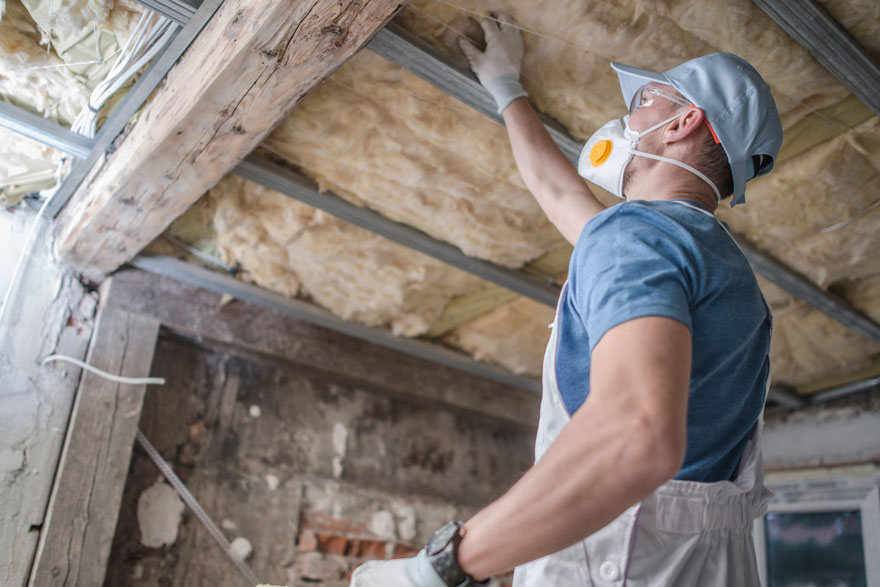- SPECIAL DISCOUNT
- 10% OFF on Full Home Recommendations + Free Consultation
- Excludes insulation services
- Contact Us
- Must mention at the time of booking
From Neglect To Neat: Revitalizing Your Home With Crawl Space Cleanout Services

A crawl space sets the mood for the whole house. When that hidden area is damp, cluttered, or pest ridden, odors drift upward, floors feel cold, and energy bills creep higher. A professional crawl space cleanout flips the script, transforming a neglected void into a dry, tidy, well-sealed buffer that supports clean air and steady comfort. Here is how the process works, why it matters, and which upgrades pay off.
Why Crawl Spaces Decline
Crawl spaces collect what the house sheds and what the ground gives. Bare soil releases moisture. Old insulation slumps and traps humidity. Small gaps at vents and sill plates invite rodents and insects. Over time, minor plumbing sweat and duct leaks feed musty air and soften wood. Left alone, this shows up as buckled floors, rusted ducts, and persistent odors that no candle can mask.
Health and Comfort Gains
A clean, dry crawl space reduces dust, spores, and rodent residues that can ride air leaks into living rooms and bedrooms. Lower humidity keeps hardwood more stable, trims tight, and fabric furnishings fresher. Many homeowners notice quieter HVAC cycles and fewer hot or cold spots after the underfloor is reset, because the system no longer fights against damp, leaky conditions below.
How a Cleanout Unfolds
The day starts with a thorough assessment and photos. Technicians map debris, moisture, damaged insulation, and signs of pest infestation. Safe access comes next, with protective paths and lighting so mess stays contained. Old batts, torn liners, nests, and trash are bagged and removed, followed by targeted sanitation where droppings or microbial growth were found.
Then the shell is sealed at rim joists, sill plates, plumbing and wire penetrations, and duct seams to stop unplanned air exchange. Moisture control follows with a fresh vapor barrier sealed wall to wall, and, if needed, drains, a sump, or a dehumidifier. Finally, insulation is replaced at the correct R value without blocking needed airflow, and the team documents the results with photos and readings.
Moisture Control
Water drives most crawl space problems. A robust ground vapor barrier with sealed seams breaks the biggest source. If storms push water under the house, perimeter drains and a sump move it out. In humid regions or tight homes, a dedicated dehumidifier holds a steady set point to protect subflooring, joists, and ducts from slow, hidden damage. The goal is predictable dryness so materials perform year-round.
Air Sealing
Stopping uncontrolled air movement cuts drafts and odors at the source. When the rim joist, hatch, utility penetrations, and duct joints are tight, crawl smells do not ride pressure changes upstairs. Conditioning stays in the ducts, and the HVAC finally works to its design instead of conditioning the ground. Small beads of the right sealant, applied in the right places, often make the biggest difference.
Insulation That Actually Performs
Insulation only works when it is dry, continuous, and correctly placed. Fresh batts or rigid foam in the right configuration limit heat loss in winter and heat gain in summer. Paired with air sealing and moisture control, the labeled R value feels real in daily living. Floors warm up, rooms stabilize, and the system runs fewer, steadier cycles.
Built-In Pest Defense
A cleanout is the ideal time to keep pests out for good. Tight vent screens, copper mesh in small gaps, reinforced door sweeps, and repairs at chewed edges remove access, food, and cover all at once. If activity was present, targeted pest control and follow ups prevent a rebound. With entry blocked and conditions dry, the new install stays clean.
Signs It Is Time
Musty odors after long HVAC runs suggest air is pulling from below. Sagging insulation, torn liners, rusted ducts, and sweating pipes all point to moisture pressure. Rodent droppings, shredded batts, and chewed edges signal entry points. Cold floors in winter and rising energy bills round out the case for action.
Upgrades with Long-term Value
Full encapsulation takes the solution further, with a sealed liner up the walls, taped seams, and a dedicated dehumidifier to create a conditioned buffer that shields structure and finishes. Smart sensors for humidity and temperature alert you to small drifts before they become expensive repairs. Duct sealing and insulation reduce losses and keep dust from being drawn through the crawl. A proper access door, safe steps, and LED lighting make future service fast and clean.
Questions Worth Asking
Clarify the scope in writing. Ask how debris removal, sanitation, sealing, and moisture control will be handled. Confirm materials and R values, along with how seams and edges are sealed. Discuss bulk water plans if heavy rain is part of your local pattern. Request before and after photos and moisture readings. Finally, ask for simple maintenance guidelines across seasons.
Top-rated Pest Cleanup and Remediation Services
Restore a healthy, sealed home with Best Pest & Wildlife Control. Our team repairs wildlife entry damage, cleans and disinfects droppings, neutralizes odors, and replaces contaminated insulation with pest‑resistant installs that support cleaner air and better efficiency.
From pinpointing tiny access gaps to safe debris removal and detailed sanitation, each step tackles both the source and the aftermath so problems do not return. Ready for a cleaner, safer space? Schedule your free home inspection and get a tailored remediation plan today.
CONTACT US FOR A FREE QUOTE
Feel free to give us a call or send us an email with any questions or comments you have.
